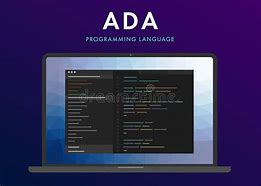

privy kurura
ADA Programming: Reliability and Robustness for Critical Systems
In the realm of programming languages, ADA stands as a distinguished and robust language that has been tailored to meet the demands of critical and safety-critical systems. Developed by the United States Department of Defense in the late 1970s and early 1980s, ADA programming has set itself apart with a strong focus on reliability, safety, and maintainability. This article delves into the unique features and advantages of ADA, shedding light on its significance in ensuring the dependability of vital systems.
Foundations of ADA Programming
ADA was conceived with a specific purpose in mind: to address the challenges of developing software for applications where human lives or large investments are at stake. Unlike general-purpose languages, ADA is engineered to thrive in environments where errors can lead to catastrophic consequences. This emphasis on safety led to the integration of features that promote reliable code development.
1. Strong Typing and Type Safety
ADA enforces a strict and robust type system. This means that variables must be explicitly defined with their data types, reducing the risk of unintended type conversions that can result in runtime errors. This strict typing contributes to code clarity and reduces the likelihood of subtle bugs.
2. Modularity and Encapsulation
The language encourages modular programming through its package system. Modules in ADA enable the separation of concerns, making it easier to manage large codebases and promoting code reusability. Additionally, ADA's support for information hiding ensures that internal details of a module remain hidden, reducing the potential for unintended interactions between components.
3. Concurrency Control
ADA provides built-in support for concurrent programming, allowing developers to manage tasks that execute concurrently without the typical pitfalls associated with race conditions and deadlocks. This is crucial for systems where multiple operations must occur simultaneously, such as real-time control systems.
4. Exception Handling
ADA's exception handling mechanism empowers programmers to gracefully manage errors and unexpected situations. This promotes the development of fault-tolerant systems that can recover from unexpected events without crashing.
Advantages in Critical Systems
ADA's design principles have made it a staple in various industries where reliability is paramount:
1. Aerospace and Defense: ADA is widely used in avionics, satellite systems, and defense applications, where software failure can have grave consequences. Its ability to handle complex, safety-critical tasks makes it an ideal choice for ensuring the integrity of these systems.
2. Medical Devices: Medical equipment and devices require software that operates flawlessly to ensure patient safety. ADA's rigorous approach to programming aligns with the stringent standards of the medical industry.
3. Industrial Control: Industrial automation and control systems demand software that can reliably manage intricate processes. ADA's features cater to the needs of these systems, minimizing the risk of accidents caused by software failures.
Conclusion
ADA programming stands as a testament to the power of tailoring a programming language to suit specific domains. Its emphasis on safety, reliability, and maintainability has solidified its role in critical and safety-critical systems. By providing features such as strong typing, modularity, concurrency control, and robust exception handling, ADA has proven its worth in industries where even the smallest software error could lead to disastrous consequences. As technology advances and the demand for dependable software continues to grow, ADA remains a steadfast choice for engineers and developers tasked with creating systems that can be trusted without compromise.
privy kurura
privy is a software developer